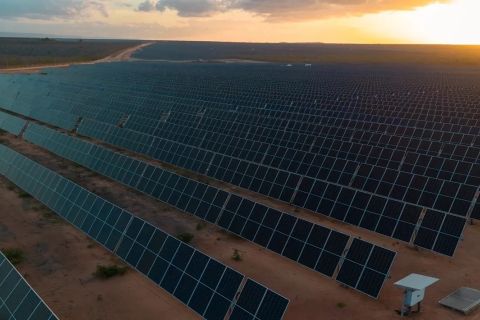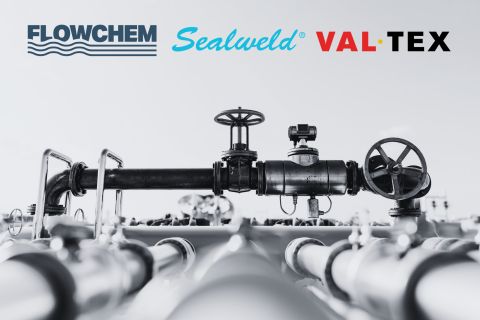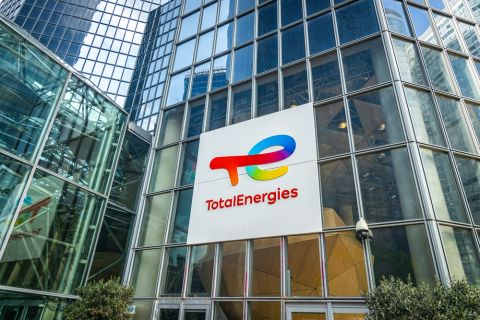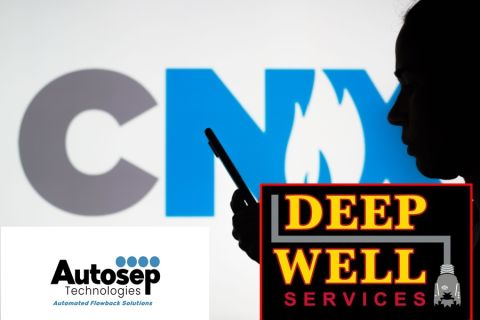Deep high-pressure, high-temperature gas targets in the Gulf of Mexico's Shelf can be company-makers, but only for companies that do their homework first.
Calling the US Gulf of Mexico's Deep Shelf play a "hot play" is probably doing it a disservice.
Hot plays tend to conjure images of high-profile successes and failures, where often luck is more important than diligent science in separating the former from the latter. Certainly luck does play a part in any venture as non-quantifiable as oil and gas exploration, but in this particular play, sound science is a much more important element.
The play is full of dichotomies. It's not a pure exploration play, per se, because much of the acreage already is leased, and much of the seismic already has been shot. It's not a classic example of small independents taking over properties ditched by the majors because these are not easy drilling targets. Any company, independent or major, who hopes to develop these fields needs to understand a great deal about imaging hard-to-see targets; drilling through depleted zones; drilling and completing in high-pressure, high-temperature environments; and producing high-volume wells through infrastructure that was designed for more modest flow rates.
Not surprisingly, then, some companies are incredibly bullish on the play, while others consider it too risky, too small or both for their particular portfolio tastes.
What is emerging, meanwhile, is a small cadre of players who hope to capitalize on their understanding of these risks, aided by geophysical contractors who hope to massage their data libraries in such a way that some of the risk is mitigated.
"We're seeing structures that are very reminiscent of things being drilled further out in deep water," said Gareth Roberts, president and chief executive officer of Denbury Resources. "The industry hasn't drilled a lot of deep wells in the shallow Shelf. But clearly the same environment existed there at one time as existed later in the deep water."
Seismic data
One would think that a renewed interest in deep shelf targets would result in a swarm of seismic vessels attempting to re-shoot the area with the latest and greatest technology. Many would like to do just that. But it would be a rather monumental task.
The depth to which marine streamer data can be resolved is directly linked to the length of the streamer, also referred to as "offset," that the seismic vessel is towing. Back in the mid-1990s, most vessels towed streamers of 13,780 ft to 15,749 ft (4,200 m to 4,800 m). A considerable amount of seismic data was acquired during that time over the areas of interest, and many shallower wells were drilled based on that data, cluttering the landscape with platforms and other culture in the process.
Many companies are attempting to reprocess this older data, but to truly image a target below 15,000 ft (4,575 m) requires longer offsets. "We think that some longer-offset data will be needed to really improve success down deeper," Roberts said. "As soon as you've got any kind of heavy structural element in there, you start to lose the fluid information in the data."
Hauling 29,500-ft (9,000-m) streamers through the clutter on the Shelf is next to impossible in a 3-D seismic survey. But it can be done, barely, in a 2-D survey, and this presents another interesting aspect about the play; in an era in which 2-D seismic has started to seem rather low-tech, some operators are revisiting it as an option.
TGS-NOPEC, for instance, has several projects under way that address the interest in these deep targets, including a project called Renaissance, a merge and prestack time-migrated reprocessing project encompassing all of the company's Shelf 3-D data, more than 700 blocks. But TGS has recognized that all the reprocessing in the world can't completely compensate for short offsets, so it's also undertaking Phase 50, a 1-mile by 1-mile 2-D seismic grid using 26,250-ft (8,000-m) offsets on the Louisiana Shelf.
Kim Abdallah, vice president of sales-Americas for TGS, said Phase 50 is one of the most expensive projects the company currently is working on. With the recent acquisition of A2D Technologies and its large well log repository, TGS intends to integrate the 2-D seismic data with workstation-ready well logs.
"For the first time we will be able to integrate wells directly into the seismic data," Abdallah said. "Combined with new gravity also being acquired with Phase 50, we will be able to provide an integrated set of tools that will be required to fully understand this play."
The sense that this play requires more than the standard one-size-fits-all multiclient seismic data is pervasive amongst the players in the area. "Oil companies typically look for (and purchase) the multiclient dataset in a given exploration area that has the longest offsets," said Elliot Pew, vice president of exploration for Newfield Exploration Co. "These data are often then reprocessed by the oil companies themselves to give the clearest picture of the deep prospect being evaluated before drilling starts."
Many of these surveys are recording trace lengths that go far below drillable targets. But the targets aren't the only things that need to be resolved. Without standard "bright spots" to lead the way, understanding the geologic history and seeing the source rock helps explorationists better understand how best to drill and develop the play.
"I don't want to say that people got lazy, but it's easy to rely on big booming bright spots to see your hydrocarbon indictors," said Joe Gagliardi, business manager Americas for PGS Seafloor Seismic. "You have to do your homework on the Deep Shelf. You've got to build the geology story and do the petrophysics. You have to rely more on geology than geophysics, and the industry has become a little geophysics-dependent."
This is another advantage to the 2-D approach. The surveys tend to be larger, so explorationists can get more of a basin-scale view rather than relying on relatively small sections and trying to extrapolate out. GX Technology is taking this idea and expanding it Gulf-wide with a project called GulfSpan. A 2-D survey that is directed by the geology rather than being laid out on a grid, GulfSpan is a single-source, single-streamer 2-D program using 29,500-ft (9,000-m) offsets and 18-second trace lengths, again with the idea that seeing the whole picture, not just specific areas of interest, gives a better overall understanding of the pertinent petroleum systems. Depending on the velocities, 18 seconds can image as far down as 60,000 ft (18,300 m).
"Traditionally there's been a kind of knowledge gap," said Kerry Inman, an exploration consultant working with GX on GulfSpan. "People know the deep water, or they know the Shelf, and often you've got two different groups working those areas. One of the ideas of GulfSpan was literally to span that gap, to give geologists the opportunity to look from the beach to the deep water."
While GulfSpan is a 2-D survey, it is being processed with the most cutting-edge technology, including prestack depth migration, to provide a very high-resolution picture. But it's also meant to provide a baseline for additional work. "One of the key elements of GXT's survey designs is to enable companies to tie in their existing 2-D and 3-D seismic archives," Inman said.
But 3-D is still the best way to hone in on a specific target once it's been identified, and several companies, including PGS and WesternGeco, have surveys under way that utilize newer, more expensive technology such as ocean bottom cables (OBC) and multicomponent acquisition. Most of these surveys cover smaller areas and are intended to offer more specific information about local areas of interest. But as costs drop, their use may become more widespread.
"Depth imaging has emerged as the leading method for processing seismic data to image complex subsurface features," said Jim White, WesternGeco's vice president for North and South America. "In the future, we expect that 3-D prestack depth imaging using long-offset multicomponent (OBC 4-C) acquisition techniques will unlock the potential of the Deep Shelf. We are currently re-imaging our 3-D OBC libraries into depth to give operators an up-to-date view of the potential deep structure. We plan to expand that program and include new acquisition techniques, including 4-C."
Fairfield Industries, meanwhile, has utilized its proprietary radio telemetry technique in water depths up to 250 ft (76 m) to shoot the equivalent of a 29,500-ft (9,000-m) offset without the use of streamers. The technology has multiple benefits. For one thing, it can tie the geology in literally from the beach, whereas streamers have a minimum water depth limit of about 50 ft (15 m). The surveys also can be shot right next to platforms, bringing in crucial existing well data. And it's 3-D data, which is always preferable to 2-D data if the price is right.
"To go back to 2-D data just to get the long offsets still doesn't image the deep section correctly," said Marc Lawrence, senior vice president and division manager of data licensing for Fairfield. "There are so many things outside the plane of the profile that you're not getting a clear look."
Lawrence added that the proper use of seismic data is crucial to success in this play because it's not a "bright spot" play and there's very little well data available. "In this environment you're going to have to put more trust in seismic technology than you have in the past," he said.
Drilling deeper
Operators will need any information they can get, and data such as that offered by shear waves will be helpful in unlocking the secrets of these deep formations.
"In terms of drilling deep, there are all sorts of challenges in the drilling side," said Bill Van Wie, vice president and general manager of Devon's Gulf Division. "You really have to know the rock column to be sure you've got an efficient well bore. Otherwise you could overspend."
He added that the shear wave data offers a better structural picture below shallow gas accumulations. But the industry's understanding of how to use shear wave data beyond this is lagging behind the need to apply it.
"You also get two sets of velocities with shear wave data and conventional seismic (compressional wave) data. Understanding the tie, or 'registering' the shear wave data to the compressional wave data, is really in its infancy," Van Wie said.
Most operators working the play consider it a balanced portion of a larger portfolio, but for many it also offers an opportunity for some fairly large finds in and around existing fields.
"In the past 2 years we've entered the deeper sections on the Shelf with relatively good success," said Steve Campbell, manager of investor relations for Newfield. "But it's not for the faint of heart. These are $8.5 million to $12 million wells with $3.5 million to $4 million completion costs. Smaller companies by nature avoid some of those things.
"There's really a select group of companies in the play, but we're starting to see the majors look at deeper targets as well. That's where they should be looking. It's the next frontier area that's got impact potential."
Pew added that much of the work "is beyond what an interpreter typically does" - understanding which rock properties are driving certain seismic responses, for instance. To this end Newfield recently hired a rock property/AVO specialist and an imaging specialist. "A large part of what they're working on directly supports our generators looking for subtle amplitudes in the Deep Shelf areas," Pew said.
It is not unusual for operators active in the play to have a very skilled exploration department and do much of the work traditionally done by vendors in-house. At Spinnaker Exploration, for example, much of the data processing is done internally. Chairman and Chief Executive Officer Roger Jarvis said to date the company has reprocessed about 5,000 OCS blocks of data.
"We pull from a lot of providers, but we try to put some consistency to it," Jarvis said. "And as we do that, it gives us access to the prestack products. We're doing everything we can internally to see that there's a consistent quality standard applied to the attribute analysis and to the reprocessing, placing a big emphasis on the quality of the image."
Spinnaker also has its own state-of-the-art visualization facility, and Jarvis said that the internal reprocessing and the ability to do multi-disciplinary studies in the visualization center have been huge advantages in understanding this play. "But I really think it's not just a luxury," he said. "It's a requirement."
What else does it take to be a Deep Shelf player? Acreage, obviously. But the mere fact that a company has an acreage position on the shallow Shelf does not automatically mean it can shoot for the deeper targets. "There may be trap styles on the conventional shelf that tend to stack with deeper objectives," Jarvis said. "But by no means is it always true. In fact, more often than not, the targets don't stack."
He added that drilling problems are "an order of magnitude bigger" than the conventional play, both because of the high-pressure, high-temperature conditions and because of pressure transitions encountered on the way down. "You get pressure regressions as well as transitions, and they're not always predictable," Jarvis said. Spinnaker explorationists use seismic data for pore pressure prediction, but the scale of the resolution usually isn't fine enough to make more than an educated guess.
"And then when you find something, it's typically high-pressure, high-temperature, high flowing tubing pressures, so maybe an existing facility nearby can help you, and maybe it can't," he said. "In general, it's a brand new play in an old area."
But some of the traditional acreage holders feel that their long-term presence in the area is an advantage. Ken Butler, vice president of Unocal USA's Gulf Region, said that the company's 50-year history in the Gulf gives it a significant acreage position along with infrastructure and transportation. Added to that is an expertise in drilling and an understanding of the subsurface and risk profile.
"When you put that together, it's an advantage," Butler said. "And we're big enough to aggressively attack this kind of play but small enough that it's material to us."
How material is it?
"There's gas there," Butler added. "The question is not if the play is successful, but how successful it is. I think that part of what industry is finding out is that the play isn't a silver bullet for the Gulf of Mexico. It's not like there's a well-defined recipe or play concept or geographical area at this depth where it's going to work on a high-percentage basis. Being successful requires the right mix of technical and financial discipline."
Abdallah and other contractors obviously are confident that the play is material since their companies are investing a great deal of money in acquiring new data. "You're talking about incredibly expensive wells, but also about structures that could be world-class in Gulf of Mexico terms," he said. "We think the new data eventually will prove out the play. What the reserves ultimately end up being is kind of a crapshoot. Based on the structures we're seeing, the reserves should be very large, but again these are Shelf wells that rival deepwater well costs."
In fact, the structures are so large that in some ways the play resembles an international play. In the Gulf of Mexico, with its smaller blocks, that can make it a rather difficult play acreage-wise. "The problem I see for the oil companies is the land position," Abdallah said. "With the current number of leases on the Shelf, it will be difficult to accumulate large acreage positions short of some type of cooperation among the operators."
Oil company behavior is also an indicator of a fairly widespread belief that the play holds real promise. Sandra Beaty, vice president of marketing and sales for PGS/Diamond Geophysical, said she knows of companies that are forming Deep Shelf exploration teams, and Gagliardi added that some of the majors who had sworn off the conventional Shelf play in years past are quietly trying to regain a foothold there. Additionally, he said, some traditional land players are using the play to get their feet wet for the first time.
"Their model onshore has been to work from a position of land strength, and land is becoming harder and harder to come by," he said. "It's easy to look over the sand dunes and see some wide open acreage where you've still got the markets and the regional pipelines for your product."
Some of the play's future will be dictated as much by government regulation as by dramatic finds. The US Minerals Management Service (MMS) issued royalty relief on deep gas targets 2 years ago, but only on newly acquired leases. This had more of an impact on the Western Gulf, which had more open acreage, than the Central Gulf. More recently there has been talk of extending that royalty relief to include acreage held by production, which could give the play an added boost.
For now the homework continues.
"There are challenges every step of the way," Jarvis said. "But having said that, when you find a 100 Bcf field on the Deep Shelf, there's hardly anything more commercial in the business."
Recommended Reading
Equinor Brings Solar Plant Online in Brazil
2024-03-08 - Equinor says the Mendubim solar plant will produce 1.2 terawatt hours of power annually.
SCF Acquires Flowchem, Val-Tex and Sealweld
2024-03-04 - Flowchem, Val-Tex and Sealweld were formerly part of Entegris Inc.
Weyerhaeuser, Lapis Energy Enter Carbon Sequestration Exploration Pact
2024-02-29 - The exploration agreement covers 187,500 acres across three states with five potential carbon sequestration sites.
TotalEnergies Buys Majority Stake in Ecoslops Provence JV
2024-03-01 - TotalEnergies bought out its joint venture partner to become the sole shareholder in cleantech venture Ecoslops Provence.
Deep Well Services, CNX Launch JV AutoSep Technologies
2024-04-25 - AutoSep Technologies, a joint venture between Deep Well Services and CNX Resources, will provide automated conventional flowback operations to the oil and gas industry.





